 W
WThe Tai ethnic group migrated into mainland Southeast Asia over a period of centuries. The word Siam may have originated from Pali or Sanskrit श्याम or Mon ရာမည, probably the same root as Shan and Ahom. Chinese: 暹羅; pinyin: Xiānluó was the name for Ayutthaya Kingdom merged from Suphannaphum city state centered in modern-day Suphan Buri and Lavo city state centered in modern-day Lop Buri. To the Thai, the name has mostly been Mueang Thai.
 W
WThe history of Thailand from 1932 to 1973 was dominated by military dictatorships which were in power for much of the period. The main personalities of the period were the dictator Luang Phibunsongkhram, who allied the country with Japan during the Second World War, and the civilian politician Pridi Phanomyong, who founded Thammasat University and was briefly prime minister after the war.
 W
WThe history of Thailand from 1973 to 2001 saw an unstable period of democracy, with military rule being reimposed after a bloody coup in 1976.
 W
WThe history of Thailand since 2001 has been dominated by the politics surrounding the rise and fall from power of former Prime Minister Thaksin Shinawatra, and subsequent conflicts, first between his supporters and opponents, then over the rising military influence in politics. Thaksin and his Thai Rak Thai Party came to power in 2001 and became very popular among the electorate, especially rural voters. Opponents, however, criticized his authoritarian style and accused him of corruption. Thaksin was deposed in a coup d'état in 2006, and Thailand became embroiled in continuing rounds of political crisis involving elections won by Thaksin's supporters, massive anti-government protests by multiple factions, removals of prime ministers and disbanding of political parties by the judiciary, and two military coups.
 W
WThe Ancient Khmer Highway was a 225 km (140 mi) roadway going northwest between Angkor and Phimai (Vimayapura). While it was not the only such road built by the Khmer, it was the most important one.
 W
WThe bunga emas dan perak, often abbreviated to bunga mas, was a tribute sent every three years to the king of Ayutthaya (Siam) from its vassal states in the Malay Peninsula, in particular, Terengganu, Kelantan, Kedah, Pattani, Nong Chik, Yala, Rangae, Kubang Pasu and Setul. The tribute consisted of two small trees made of gold and silver, plus costly gifts of weapons, goods and slaves.
 W
WClaude Céberet du Boullay (1647–1702) was a 17th-century French diplomat who participated in the La Loubère-Céberet embassy as "envoy extraordinary" to the kingdom of Siam in 1687. He was co-representative of the mission with the diplomat Simon de la Loubère.
 W
WThe Chakri dynasty is the current reigning dynasty of the Kingdom of Thailand, the head of the house is the king, who is head of state. The family has ruled Thailand since the founding of the Rattanakosin Era and the city of Bangkok in 1782; following the end of Taksin Thonburi's reign, when the capital of Siam shifted to Bangkok. The royal house was founded by Rama I, an Ayutthaya military leader of Sino-Mon descent.
 W
WChedi Phukhao Thong Thai: เจดีย์ภูเขาทอง is a 50-metre chedi, or Buddhist tower, in the village of Phukhao Thong near Ayutthaya in central Thailand. Visitors can climb as far a landing halfway up the chedi, from which the surrounding rice fields and the town of Ayutthaya can be seen. In 2014 it was possible for the public to visit the shrine inside the central tower.
 W
WChi Tu was an ancient kingdom mentioned in the history of China. The Sui Dynasty annals describe an advanced kingdom called Chi Tu in 607, when Chang Chun was sent as an ambassador there. The location of Chi Tu was disputed; proposals for its location include areas in the states of Kelantan or Pahang in Malaysia, or in Songkhla and Pattani Province of southern Thailand. The best evidence to support the Kelantan theory was when the envoys left Chi Tu, the sail took 10 days to reach Champa, this indicates the kingdom was located somewhere 'red earth' around the main river of Kelantan. The inscribed Buddhagupta Stone found in Kedah mentioned a Raktamrttika, meaning "red earth land".
 W
WThe Crown Prince of Thailand is a title held by the heir apparent to the Thai throne. First created by King Chulalongkorn in 1886, for his son Prince Maha Vajirunhis, the king's eldest son by a royal wife Queen Savang Vadhana. Prior to this, the Siamese throne did not have a law or formal system regulating the royal succession. In 1688 King Petracha of Ayutthaya created the title of Front Palace, which by the Rattanakosin period had become the main title granted to the heir presumptive to the throne. However few Front Palaces have succeeded to the throne this way, with the exception of King Buddha Loetla Nabhalai in 1809. After the death of Bovorn Wichaichan in 1885, the title of Front Palace was abolished and replaced with the title of Crown Prince, who became heir apparent to the throne.
 W
WThe known early history of Thailand begins with the earliest major archaeological site at Ban Chiang. Dating of artifacts from this site is controversial, but there is a consensus that at least by 3600 BCE, inhabitants had developed bronze tools and had begun to cultivate wet rice, providing the impetus for social and political organisation.
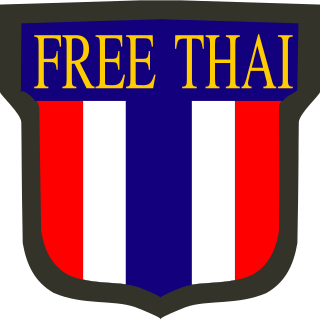 W
WThe Free Thai Movement was a Thai underground resistance movement against Imperial Japan during World War II. Seri Thai were an important source of military intelligence for the Allies in the region.
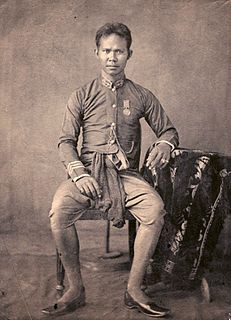 W
WKrom Phra Ratchawang Bowon Sathan Mongkhon กรมพระราชวังบวรสถานมงคล, colloquially known as the Front Palace, was the title of the uparaja of Siam, variously translated as "viceroy", "vice king" or "Lord/Prince of the Front Palace", as the titleholder resided in the physical residence of the same name. The office of Front Palace was considered second only to the king and regarded as the heir presumptive. The name, with its dual meaning, originated in the Ayutthaya period, and the holder later gained significant powers during the Rattanakosin period. Front Palace occupants were usually a son or brother of the reigning monarch. The office existed until the death of the last occupant, Prince Vichaichan, in 1885. King Chulalongkorn then abolished the office of an heir presumptive, introducing in its stead the Western concept of a crown prince as heir apparent, and styled the new office "Crown Prince of Siam".
 W
WThe history of Isan has been determined by its geography, situated as it is on the Korat Plateau between Cambodia, Laos, and Thailand.
 W
WKnown as "Lavo" during most of its history, Lopburi Province is one of the most important cities in the history of Thailand. The city has a long history, dating back into the prehistory period since the Bronze Age of more than 3,500 years ago.
 W
WBefore the Tai people's southward migration from Guangxi since the 4th century, the Indochinese peninsula had already been populated by Australo-Melanesians who by around 30,000 BP had spread into all sub-regions. They left traces of the first local culture - the Hoabinhian, a name assigned to an industry and cultural continuity of stone tools and flaked cobble artifacts that appears around 10,000 BP in caves and rock shelters first described in Hòa Bình, Vietnam, later also documented in Terengganu, Malaysia, Sumatra, Thailand, Laos, Myanmar, Cambodia and Yunnan, southern China.
 W
WThe history of Jews in Thailand began in the 17th century with the arrival of Baghdadi Jewish families. The modern community consists of the Ashkenazi descendants of refugees from Russia and the Soviet Union. There are also Persian Jews migrations during the 1970s and 1980s to escape the Iranian Revolution.
 W
WThe Khmer People's National Liberation Armed Forces (KPNLAF) was the military component of the Khmer People's National Liberation Front (KPNLF) a political front organized in 1979 in opposition to the Vietnamese-installed People's Republic of Kampuchea (PRK) regime in Cambodia. The KPNLAF was loyal to Son Sann, a former Prime Minister under Prince Norodom Sihanouk and the founder of the KPNLF political movement.
 W
WThe Khmer People's National Liberation Front was a political front organized in 1979 in opposition to the Vietnamese-installed People's Republic of Kampuchea (PRK) regime in Cambodia. The 200,000 Vietnamese troops supporting the PRK, as well as Khmer Rouge defectors, had ousted the Democratic Kampuchea regime of Pol Pot, and were initially welcomed by the majority of Cambodians as liberators. Some Khmer, though, recalled the two countries' historical rivalry and feared that the Vietnamese would attempt to subjugate the country, and began to oppose their military presence. Members of the KPNLF supported this view.
 W
WThe Khmer Serei were an anti-communist and anti-monarchist guerrilla force founded by Cambodian nationalist Son Ngoc Thanh. In 1959, he published 'The Manifesto of the Khmer Serei' claiming that Sihanouk was supporting the 'communization' of Kampuchea. In the 1960s, the Khmer Serei were growing in numbers, hoping to become a major political and fighting force.
 W
WKhun Chang Khun Phaen is a long Thai epic poem which originated from a legend of Thai folklore and is one of the most notable works in Thai literature. The work's entire length is over 20,000 couplets. Khun Chang and Khun Phaen are the leading male characters, where "Khun" was a junior feudal title given for male commoners. The story recounts the adventurous and amorous struggles of the three main protagonists. Much of their relationship can be described as a love triangle. Khun Phaen and Khun Chang compete for the lovely Wanthong from childhood for over fifty years. Their stories transpire amid the larger backdrop of national events, including two wars, several abductions, a suspected revolt, an idyllic sojourn in the forest, two court cases, trial by ordeal, jail, and treachery. Ultimately the King of Ayutthaya condemns Wanthong to death for failing to choose between the two men.
 W
WThe Kingdom of Luang Phrabang was formed in 1707 as a result of the split of the Kingdom of Lan Xang. When The kingdom split, Muang Phuan became a tributary state of Luang Prabang. Then as the years passed, the monarchy weakened even more, that it was forced to become a vassal various times to the Burmese and the Siamese monarchies.
 W
WKingdom of Vientiane was formed in 1707 as a result of the split of the Kingdom of Lan Xang. The kingdom was a Burmese vassal from 1765 to 1824. It then became a Siamese vassal until 1828 when it was annexed by Siam.
 W
WThe Lao People's Democratic Republic is the modern state derived from the final Kingdom of Laos. The political source of Lao history and cultural identity is the Tai kingdom of Lan Xang, which during its apogee emerged as one of the largest kingdoms in Southeast Asia. Lao history is filled with frequent conflict and warfare, but infrequent scholarly attention. The resulting dates and references are approximate, and rely on source material from court chronicles which survived both war and neglect, or outside sources from competing neighboring kingdoms in what are now China, Vietnam, Burma, Thailand, and Cambodia.
 W
WThe Kingdom of Lavo was a political entity (mandala) on the left bank of the Chao Phraya River in the Upper Chao Phraya valley from the end of Dvaravati civilization, around the 7th century, until 1388. The original center of Lavo civilization was Lavo, but the capital shifted southward to Ayodhaya, the port city on the right side of the Ayutthaya island around the 11th century, whereupon the state was incorporated into the Ayutthaya Kingdom in the 14th century.
 W
WThis article lists the lord ruler of Lan Na from the foundation of the Ngoenyang in 638 until the end of Kingdom of Chiang Mai under Siamese administration in 1939.
 W
WThe monarchy of Thailand refers to the constitutional monarchy and monarch of the Kingdom of Thailand. The King of Thailand is the head of state and head of the ruling Royal House of Chakri.
 W
WMuang Phuan or Xieng Khouang was a historical principality on the Xiangkhoang Plateau, which constitutes the modern territory of Xiangkhouang Province, Laos.
 W
WMyanmar–Thailand relations refers to the current and historical relations between Myanmar and Thailand. Myanmar has an embassy in Bangkok. Thailand has an embassy in Yangon. Relations between Burma and Thailand focus mainly on economic issues and trade. There is sporadic conflict with Thailand over three disputed islands.
 W
WThe peopling of Thailand refers to the process by which the ethnic groups that comprise the population of present-day Thailand came to inhabit the region.
 W
WPhaya Tani is a 17th-century siege cannon from Pattani Province in southern Thailand. It is the largest cannon ever cast in what is now Thailand, measuring 2.7 m long and made of brass. It is on display in front of the Ministry of Defence, opposite the Grand Palace in Bangkok. The cannon still serves as the symbol of Pattani Province and it has been on the official seal of Pattani Province since 1939.
 W
WThe Phayao Kingdom was a period in the history of Phayao in Northern Thailand. It began with a revolt against the Chiang Rai rulingship in the northern Thailand.
 W
WThe lands situated in the present-day Phitsanulok Province of Thailand have been inhabited since the Stone Age, although the neolithic inhabitants of the region are not likely to have been the ancestors of the modern Thai people who reside there today. The earliest historical records relating to what is now Phitsanulok Province indicates that at a time prior to or during the 11th century, the present-day city of Phitsanulok was but a small strategic Khmer outpost known as Song Khwae. During the next century, in 1188, Nakhon Thai, located near the center of the present Phitsanulok Province, was established as the capital city of the Singhanavati Kingdom, an early city-state of Thailand. Later, during Thailand's Sukhothai Period, the city of Phitsanulok emerged as a major city in the east of the Sukhothai Kingdom, and the great temples of Wat Chula Manee, Wat Aranyik and Wat Chedi Yod Thong were constructed. In 1357, the renowned Wat Phra Sri Rattana Mahathat was erected, and the Ayutthaya Period witnessed the construction of several of the province's other chief temples. Phitsanulok served for 25 years as the capital city of the Ayutthaya Kingdom. In 1555, King Naresuan the Great was born in the city of Phitsanulok. Naresuan played a significant role in the history of Thailand, as he expanded the kingdom to its greatest territorial extent, by conquering sizable portions of modern-day Burma and Cambodia. In recent times, Phitsanulok Province has become an important agricultural center, part of the Bread Basket of Thailand, providing rice and other crops to consumers in Thailand and throughout the world. Extensive agricultural development over the last hundred years or so has spawned a modern infrastructure in the urban areas of the province, bringing with it an array of modern roads, universities, hospitals and other conveniences. Over the years, the Nan River and its tributaries have played a substantial role in the history and development of the region by providing a route for transportation, fertile soil for agriculture, and water for irrigation. The river waters have also served as a route for enemy invaders, and have been the source of periodic widespread flooding throughout the province.
 W
WPrehistoric Thailand may be traced back as far as 1,000,000 years ago from the fossils and stone tools found in northern and western Thailand. At an archaeological site in Lampang, northern Thailand Homo erectus fossils, Lampang Man, dating back 1,000,000 – 500,000 years, have been discovered. Stone tools have been widely found in Kanchanaburi, Ubon Ratchathani, Nakhon Si Thammarat, and Lopburi. Prehistoric cave paintings have also been found in these regions, dating back 10,000 years.
 W
WThe Rattanakosin Kingdom is the fourth and present Thai kingdom in the history of Thailand, which was formerly known as Siam until 1939. It was founded in 1782 with the establishment of Rattanakosin (Bangkok), which replaced the city of Thonburi as the capital of Siam. This article covers the period until the Siamese revolution of 1932.
 W
WIn Thailand, the regent is a person who exercises the official functions of a monarch of Thailand when the monarch is incapable of functioning or during a period of interregnum.
 W
WThe Royal Standard of Thailand is the official flag of the King of Thailand. The present form was adopted in 1910 under Vajiravudh, superseding the first Royal Standard created by Mongkut in 1855. In 1979, the designs were codified by law; specifically in Article 2 of the Flag Act of 1979, which also regulated Thailand's other flags. The standard is currently used by Maha Vajiralongkorn, also known as Rama X, since 2016.
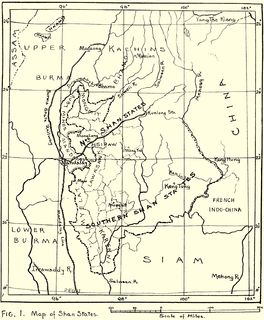 W
WThe Shan States (1885–1948) were a collection of minor Shan kingdoms called muang whose rulers bore the title saopha in British Burma. They were analogous to the princely states of British India.
 W
WThe Kingdom of Siam, now known as Thailand, is one of the least-known participants in World War I. Siam contributed to the fight against the Central Powers in one of the critical campaigns of the war. It sent an Expeditionary Force to France to serve on the Western Front.
 W
WThe Siamese embassy to France in 1686 was the second such mission from the Kingdom of Siam. The embassy was sent by King Narai and led by ambassador Kosa Pan. This embassy was preceded by the First Siamese Embassy to France, composed of two Siamese ambassadors and Father Bénigne Vachet, who had left Siam for France on January 5, 1684.
 W
WThe Siamese invasion of Kedah was a military operation mounted by the Kingdom of Siam against the Sultanate of Kedah in November 1821, in the area of what is now northern Peninsula Malaysia.
 W
WThe Sip Song Chau Tai was a confederation of Tai Dam, Tai Dón and Tai Daeng chiefdoms in the mountainous north-west of today's Vietnam, dating back at least to the 17th century.
 W
WThe South Thailand insurgency is an ongoing conflict centered in southern Thailand. It originated in 1948 as an ethnic and religious separatist insurgency in the historical Malay Patani Region, made up of the three southernmost provinces of Thailand and parts of a fourth, but has become more complex and increasingly violent since the early 2000s from drug cartels, oil smuggling networks, and sometimes pirate raids.
 W
WSpirit Cave is an archaeological site in Pang Mapha district, Mae Hong Son Province, northwestern Thailand. It was occupied 12,000 to 7,000 uncalibrated radiocarbon years ago by prehistoric humans of the Hoabinhian culture.
 W
WSyburi is the name for the Malay state of Kedah returned to Thailand when the Japanese occupied British Malaya during World War II.
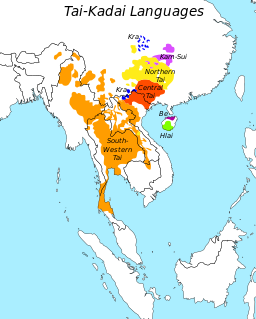 W
WThe terms Kra-Dai people or Kra–Dai-speaking peoples refer collectively to the ethnic groups of southern China and Southeast Asia, stretching from Hainan to Northeast India and from southern Sichuan to Laos, Thailand and parts of Vietnam, who not only speak languages belonging to the Kra–Dai language family, but also share similar traditions, culture and ancestry.
 W
WThaification, or Thai-ization, is the process by which people of different cultural and ethnic origins living in Thailand become assimilated to the dominant culture of Thailand, that of central Thailand.
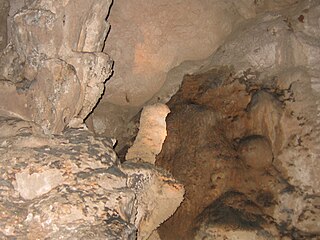 W
WThe communist insurgency in Thailand was a guerrilla war lasting from 1965 until 1983, fought mainly between the Communist Party of Thailand (CPT) and the government of Thailand. The war declined in 1980 following the declaration of an amnesty and by 1983 the CPT had abandoned the insurgency.
 W
WTiger hunting is the capture and killing of tigers. Humans are the tigers' most significant predator, and illegal poaching is a major threat to the tigers. The Bengal tiger is the most common subspecies of tiger, constituting approximately 80% of the entire tiger population, and is found in Bangladesh, Bhutan, Myanmar, Nepal, and India. It has been hunted in these countries for centuries. The tiger has historically been a popular big game animal and has been hunted for prestige as well as for taking trophies. Extensive poaching has continued even after such hunting became illegal and legal protection was provided to the tiger. Now a conservation-reliant endangered species, the majority of the world's tigers live in captivity. Tigers were once considered to be harder to hunt than lions, due to their habit of living alone in dense cover and not noisily asserting their presence with roars as often.
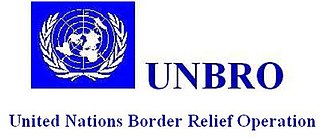 W
WThe United Nations Border Relief Operation (UNBRO) was a donor-nation funded relief effort for Cambodian refugees and others affected by years of warfare along the Thai-Cambodian border. It functioned from 1982 until 2001.